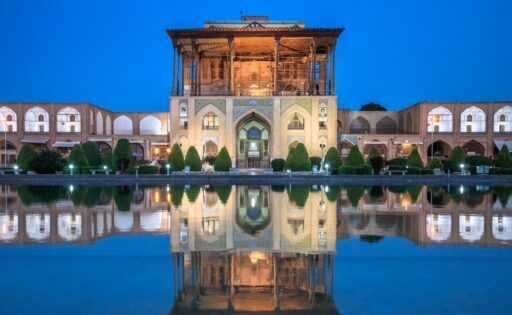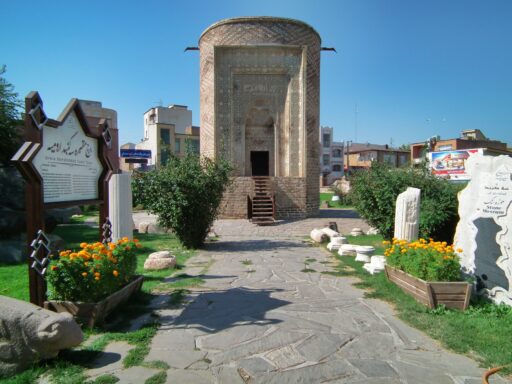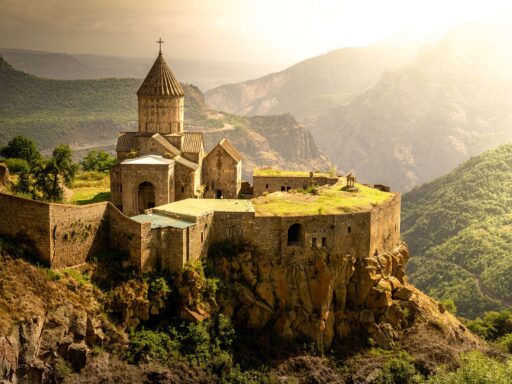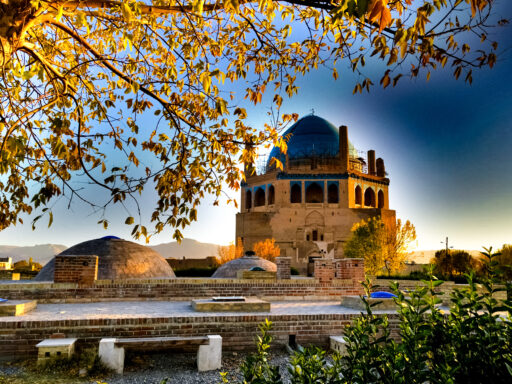Introducing The Ali Qapu
Iran, a country steeped in rich history and culture, boasts numerous architectural wonders. Among these treasures is Ali Qapu, an iconic palace located in the heart of Isfahan. This grand edifice, with its intricate design and historical significance, stands as a testament to the artistic and architectural prowess of the Safavid era. This article will take you on an in-depth journey through the history, architecture, cultural importance, and the experience of visiting Ali Qapu, providing a comprehensive overview of this remarkable palace.
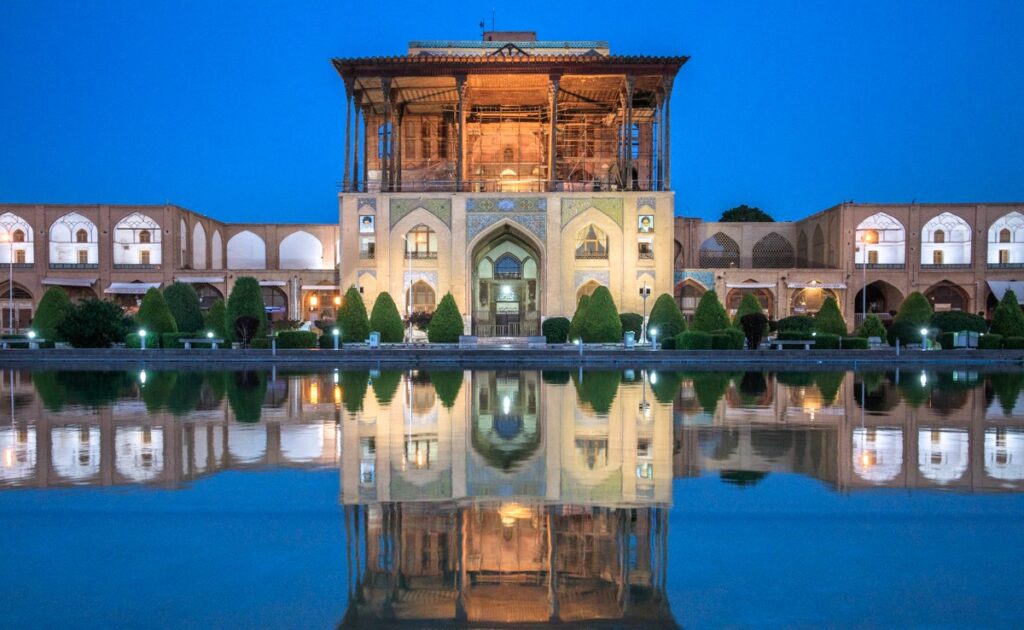
Historical Context
The Safavid Era
Ali Qapu Palace was built during the Safavid dynasty, which ruled Iran from 1501 to 1736. The Safavids were instrumental in shaping the cultural and architectural landscape of Iran, promoting arts, crafts, and grand architectural projects. Isfahan, the capital during much of the Safavid era, became the epicenter of this cultural renaissance.
Construction and Purpose
Construction of Ali Qapu began in the late 16th century under the reign of Shah Abbas I, one of the most prominent Safavid rulers. The palace served as the official residence of the Shah and as a venue for entertaining foreign dignitaries and important guests. Its strategic location on the western side of Naqsh-e Jahan Square (Imam Square) made it a focal point in the city’s social and political life. Over the years, the palace underwent several expansions and renovations, reflecting the evolving tastes and needs of the Safavid rulers.
Architectural Splendor
Exterior Design
Ali Qapu is a towering structure, standing 48 meters (157 feet) tall and comprising six floors. The palace is renowned for its grand portico, featuring a terrace supported by 18 slender wooden columns. This terrace, known as the talar, offers a stunning view of Naqsh-e Jahan Square and was used by the Shah and his guests to watch polo games, military parades, and other public events. The exterior of the palace is adorned with intricate tile work, showcasing the exquisite craftsmanship of Safavid artisans.
Interior Design
The interior of Ali Qapu is a marvel of Persian architecture, featuring lavish decorations, intricate stucco work, and elaborate frescoes. Each floor has its unique design and purpose:
The Ground Floor
The ground floor served as the main entrance and reception area. It features a grand staircase leading to the upper levels and is adorned with beautiful tile work and calligraphy. The entrance hall is designed to impress visitors with its grandeur and elegance.
The Second and Third Floors
These floors were used for administrative purposes and included offices and meeting rooms. The walls are decorated with frescoes depicting hunting scenes, floral patterns, and geometric designs, reflecting the artistic style of the Safavid era.
The Fourth Floor
The fourth floor houses the Music Hall, one of the most remarkable features of Ali Qapu. The walls and ceilings of this hall are adorned with intricate stucco work, creating niches and alcoves designed to enhance the acoustics. This allowed for performances of traditional Persian music and provided a space for private entertainment. The stucco work includes shapes resembling vases and other musical instruments, adding to the hall’s aesthetic and functional appeal.
The Fifth and Sixth Floors
These floors were private quarters for the Shah and his family. They feature more intimate and luxurious decorations, including detailed frescoes, intricate stucco work, and beautifully painted wooden ceilings. The upper floors also offer panoramic views of the city and the surrounding landscapes, providing a serene and majestic retreat for the royal family.

Cultural and Historical Significance
Symbol of Safavid Power
Ali Qapu is more than just an architectural marvel; it is a symbol of Safavid power and grandeur. The palace reflects the political and cultural ambitions of Shah Abbas I, who sought to make Isfahan a center of art, culture, and commerce. The construction of Ali Qapu and other grand projects in Isfahan was part of a broader strategy to showcase the might and sophistication of the Safavid dynasty.
Artistic Legacy
The artistic legacy of Ali Qapu is evident in its intricate decorations and design. The palace features work by some of the most skilled artisans and craftsmen of the Safavid era, including calligraphers, painters, and tile makers. The frescoes, tile work, and stucco decorations are exemplary of Persian art and have inspired countless artists and architects over the centuries.
UNESCO World Heritage Site
Ali Qapu, along with Naqsh-e Jahan Square and other nearby monuments, was designated a UNESCO World Heritage Site in 1979. This recognition underscores the palace’s cultural and historical importance, as well as its contribution to the world’s architectural heritage. The designation helps ensure the preservation and protection of Ali Qapu for future generations.
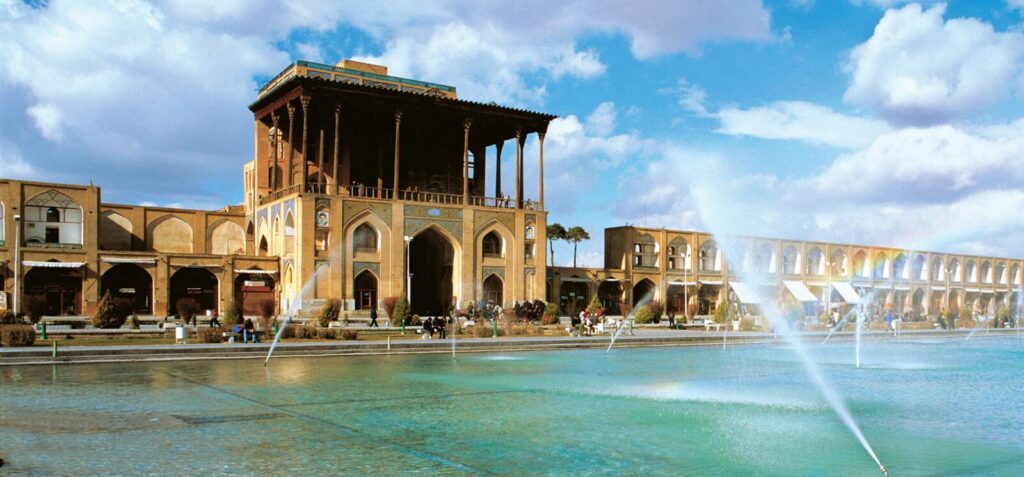
Visiting Ali Qapu
Getting There
Ali Qapu is located in the heart of Isfahan, on the western side of Naqsh-e Jahan Square. The city is well-connected by road and air, with regular flights from major cities in Iran and neighboring countries. Once in Isfahan, visitors can easily reach Ali Qapu by taxi, public transportation, or on foot, as it is situated in a central and accessible location.
Entrance and Tickets
Visitors to Ali Qapu need to purchase an entrance ticket, which is available at the main gate. The ticket price is relatively modest, and discounts are often available for students and senior citizens. The palace is open to the public throughout the week, although it is advisable to check the opening hours in advance, as they may vary depending on the season and public holidays.
Guided Tours
To fully appreciate the history and architectural details of Ali Qapu, guided tours are highly recommended. Knowledgeable guides provide insights into the palace’s history, its various features, and the artistic techniques used in its construction. Tours are available in multiple languages, catering to both domestic and international visitors.
Exploring the Palace
The Grand Entrance
The visit begins at the grand entrance on the ground floor, where visitors can marvel at the intricate tile work and calligraphy. The entrance hall sets the tone for the rest of the palace, showcasing the grandeur and elegance that define Ali Qapu.
The Talar
The highlight of the visit is the talar, the grand terrace on the third floor. From here, visitors can enjoy a panoramic view of Naqsh-e Jahan Square and its surrounding landmarks, including the Shah Mosque, Sheikh Lotfollah Mosque, and the Imperial Bazaar. The talar provides a unique perspective on the architectural harmony of the square and its significance in the urban layout of Isfahan.
The Music Hall
The Music Hall on the fourth floor is another must-see feature. The intricate stucco work and unique acoustic design make this hall a fascinating place to explore. Visitors can imagine the grand musical performances that once took place here and appreciate the skill and artistry that went into creating such a space.
The Upper Floors
The fifth and sixth floors, which served as private quarters for the Shah and his family, offer a more intimate glimpse into the royal lifestyle. The beautifully decorated rooms, with their detailed frescoes and painted ceilings, reflect the luxury and refinement of the Safavid court. The upper floors also provide stunning views of the city and the surrounding countryside, making them a perfect place to conclude the visit.

Preservation and Restoration
Challenges and Efforts
Over the centuries, Ali Qapu has faced various challenges, including natural wear and tear, environmental factors, and occasional neglect. Preservation and restoration efforts have been ongoing to address these challenges and ensure the palace remains in good condition. These efforts include structural repairs, restoration of frescoes and tile work, and measures to protect the palace from environmental damage.
Role of UNESCO
As a UNESCO World Heritage Site, Ali Qapu benefits from international attention and support for its preservation. UNESCO provides guidance and resources to help maintain the palace and promote sustainable tourism. The designation also helps raise awareness about the importance of preserving cultural heritage sites like Ali Qapu.
Local and National Initiatives
Local and national authorities in Iran are also actively involved in the preservation of Ali Qapu. Various initiatives aim to promote the palace as a tourist destination, improve visitor facilities, and ensure that preservation efforts are aligned with international standards. Public and private partnerships play a crucial role in funding and supporting these initiatives, ensuring that Ali Qapu remains a cherished and well-maintained monument.
Ali Qapu in Modern Culture
Symbol of Isfahan
Ali Qapu is a symbol of Isfahan and a source of pride for its residents. The palace is featured in numerous publications, documentaries, and promotional materials about the city, highlighting its historical and architectural significance. It serves as a reminder of Isfahan’s glorious past and its enduring cultural heritage.
Inspiration for Artists
The beauty and elegance of Ali Qapu continue to inspire artists and designers. The palace’s intricate decorations and architectural features are frequently referenced in contemporary art, design, and fashion. Artists draw inspiration from the palace’s rich history and its exquisite craftsmanship, creating works that pay homage to this iconic monument.
Educational Value
Ali Qapu also serves as an educational resource, offering valuable insights into Persian art, architecture, and history. Schools, universities, and cultural institutions often organize visits and study programs focused on the palace, helping students and researchers deepen their understanding of Iran’s cultural heritage. The palace provides a tangible connection to the past, allowing learners to experience history firsthand.
Practical Information for Visitors
Best Time to Visit
The best time to visit Ali Qapu is during the spring (March to May) and autumn (September to November) months when the weather is mild and pleasant. These seasons offer ideal conditions for exploring the palace and the surrounding Naqsh-e Jahan Square. Summer can be quite hot, while winter may bring colder temperatures and occasional rain, so visitors should plan accordingly.
Nearby Attractions
Ali Qapu is located in the heart of Isfahan, surrounded by numerous other attractions worth visiting. Some of the notable nearby sites include:
- Naqsh-e Jahan Square: One of the largest public squares in the world, featuring the Shah Mosque, Sheikh Lotfollah Mosque, and the Imperial Bazaar.
- Chehel Sotoun: A beautiful palace and garden complex, known for its stunning frescoes and reflective pool.
- Isfahan Bazaar: A vibrant market offering a wide range of traditional crafts, textiles, and souvenirs.
- Vank Cathedral: An Armenian church with a rich history and an impressive museum.
Visitor Tips
- Wear Comfortable Shoes: Exploring Ali Qapu involves walking and climbing stairs, so comfortable footwear is recommended.
- Stay Hydrated: Carry a bottle of water, especially if visiting during the warmer months.
- Photography: Photography is allowed in most areas of the palace, but be mindful of any restrictions and respect the preservation efforts.
- Respect the Site: Ali Qapu is a cultural and historical treasure. Visitors should respect the site by not touching the decorations, avoiding littering, and following all guidelines provided by the staff.
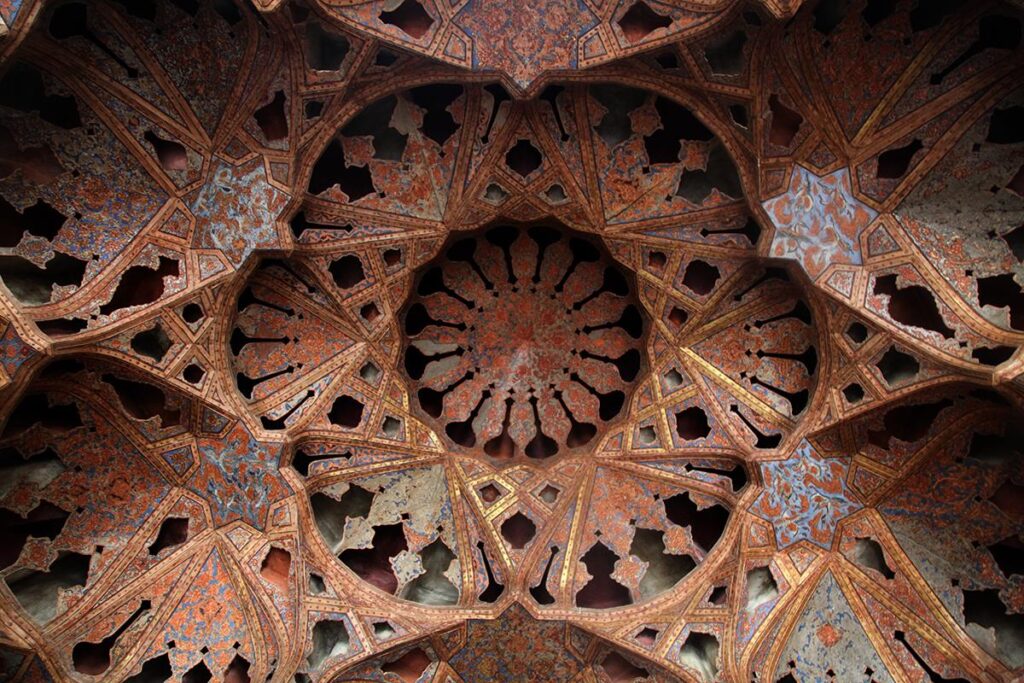
Conclusion
Ali Qapu Palace stands as a testament to the architectural brilliance and cultural richness of the Safavid era. Its grand design, intricate decorations, and historical significance make it a must-visit destination for anyone traveling to Isfahan. The palace offers a glimpse into Iran’s glorious past, showcasing the artistry and sophistication that defined the Safavid dynasty. Whether you are a history enthusiast, an art lover, or a curious traveler, Ali Qapu provides an unforgettable experience that captures the essence of Persian heritage. As efforts continue to preserve and promote this iconic monument, Ali Qapu will undoubtedly remain a source of inspiration and wonder for generations to come.

